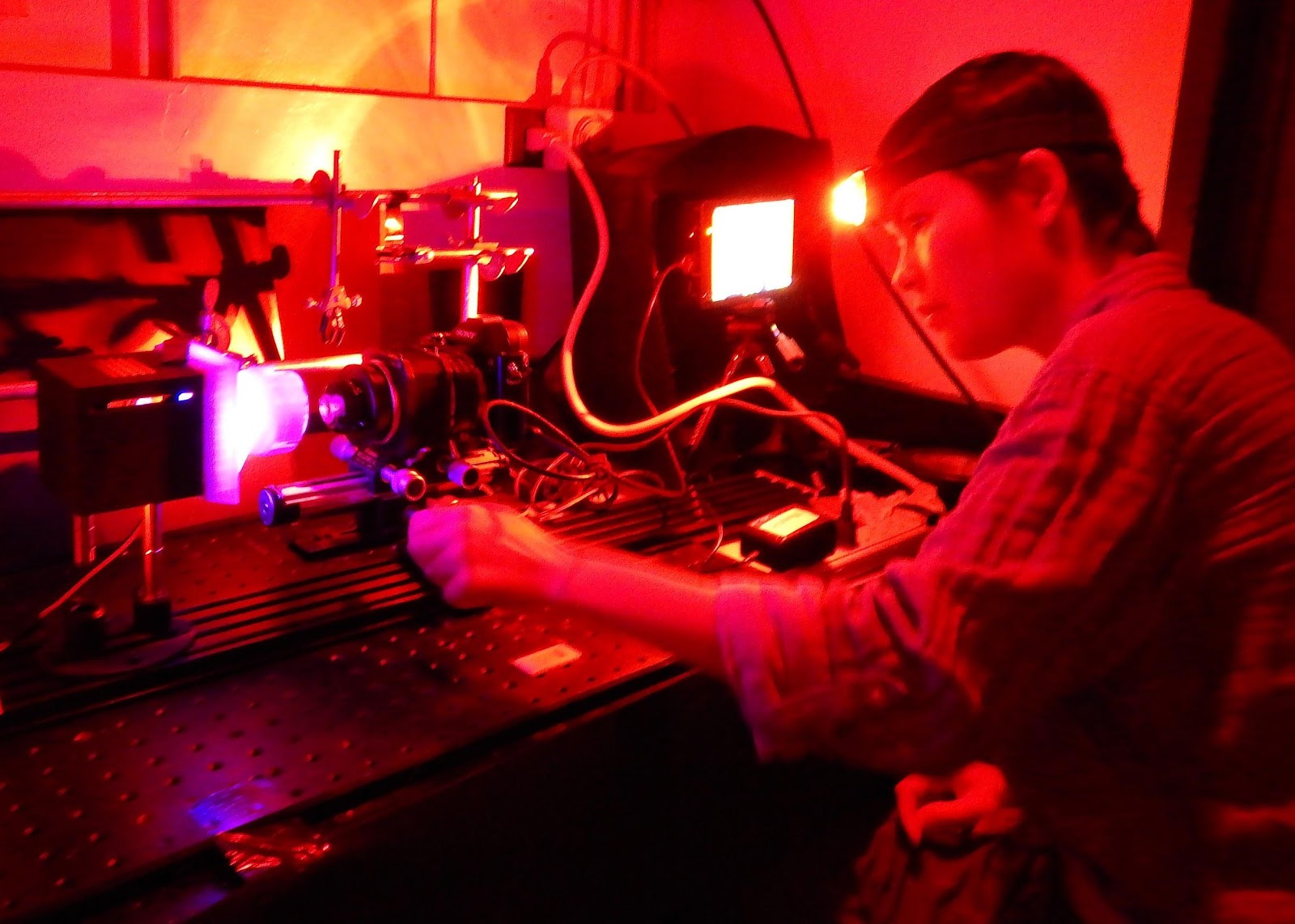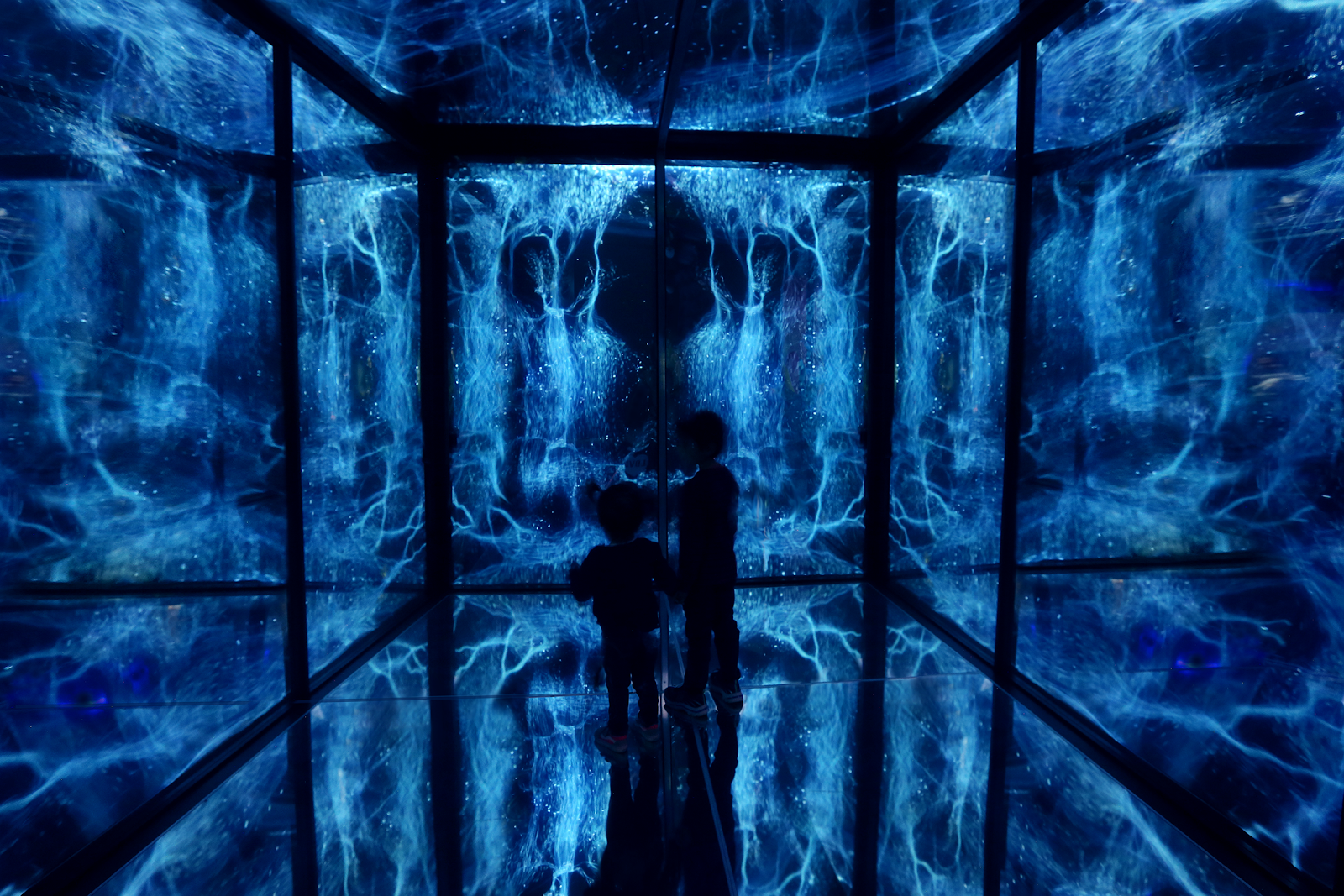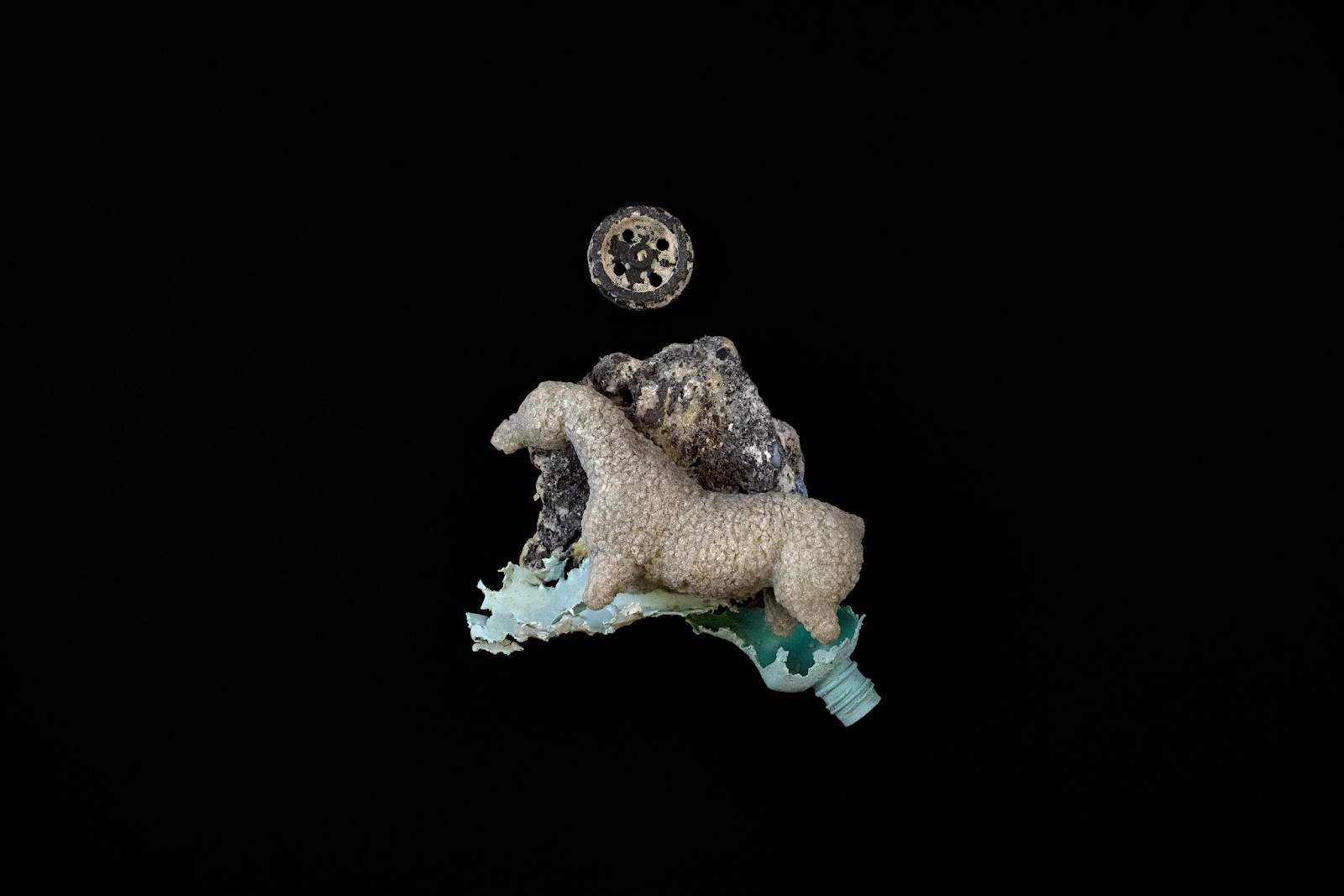London-based and Singapore-raised artist Iyvone Khoo observes light through a microscopic and macroscopic lens, mulling over the many forms that it can take. Culminating in the form of videos, light and glass sculptures and installations, her work is an ode to nature’s small wonders.
Recently awarded the MEAD Fellowship at London’s University of Arts, she actively collaborates with scientists on her work, studying bioluminescent algae and phytoplankton.
B-SIDE catches up with the internationally-exhibited artist on her intimate relationship with the natural world, ecology and life lessons through the lens.
-

The most and least beautiful light in the world is:
The most beautiful light in the world is the sun, and the least beautiful light in the world is a flickering lightbulb because it’s distracting. It’s difficult to choose.
Our closest star, the sun, is beautiful when we experience it as a sunset or sunrise and essential for life on earth. In excess, sunlight is deadly and the laws of nuclear fusion can be turned into something monstrous and destructive. A flickering lightbulb in the right context can create a mysterious, intriguing experience. The flashing of bioluminescence light is magical to witness, though it is fleeting and ephemeral.
All light is beautiful as it enhances and reveals to us the beauty of our world.
Which of your projects are closest to your heart?
Each project is different. I see each project as an opportunity to learn.
Working with biological lifeforms is the closest to my heart.
What does your typical creative process look and feel like?
A mixture of approaches and mediums. It starts with inspiration (usually from nature) and then searching for the best medium to convey an idea. It could be photography, video, installations or assemblages.
Often, it involves finding workable solutions to problems through trial and error, observation, intuition and further excavating for hidden meanings or connections found beneath the surface; a process of exploration and experimentation out of my comfort zone.
It feels like a mixture of sublime exhilaration and intense trepidation.
What is it about lens-based media that intrigues you to continue exploring with light and technology?
This medium has a rich history and is in continuous evolution which allows me to constantly test the limits of the equipment and my knowledge.
The mechanical lens allows me to see and observe in detail my subject. The camera captures and immortalises that moment in time. And the technology helps me to visualise and construct the narrative of the final piece.

Is life better seen through a lens or with our own two eyes?
The camera lens is a mechanical device, its function is to allow us to focus on things our eyes can and cannot see, from microscopic organisms to distant galaxies. Lenses, light and technology broaden our horizons and perspective of our world and encourage us to see differently and further. A lens is useful for seeing things our eyes are unable to but it is our eyes together with our brain that ultimately process that information.
Observing nature through the lens is a form of mindful looking.
A seemingly motionless creature such as coral is so full of life and movement when we speed up a time-lapse video footage.
What drives your continued study of nature?
I am confronted by how we set ourselves apart from nature, as if it is different from us.
My practice sets out to face that perilous difference in some constructive way.
I don't romanticise nature, it can be harsh and destructive at times but it also inspires, provides, heals and sustains us.
Have your views on ecology and the environment shifted during your career?
Yes, I try to be more conscientious and consume less, we live in a planet with finite resources. I have an increased empathy, respect and gratitude for our natural world and understand that we are all deeply interconnected with it.
Climate change and technological development will have impacts on our lives in a way that we cannot predict. The experience of working with living bioluminescent organisms for the first time, had shaped my art making process. When I started the project, I thought they would glow on command, but that wasn’t the case.
I thought the project would take six months to finish but that wasn’t the case; it took two years.
The timeline wasn’t defined by me; it was defined by the process and the living organisms.
Through this process of capturing the fleeting light of bioluminescence, I found an increased appreciation and awareness of the fragility and ecological importance of these microscopic organisms.
We must all realise that something as small as algae, which make half of the oxygen that we breathe, are just as important and in peril as trees on land.
Your creative practice is intrinsically linked to science, and you collaborate with scientists. Where does this stem from?
It all started with a midnight stroll in a turtle sanctuary, on a beach in Mexico, where I first saw the Milky Way above me and a bioluminescence bloom beneath my feet.
Several years later, I was awarded the MEAD Fellowship, my proposed project aimed to combine Art, Science and Technology. The final piece was an installation, Ara Lucidus (Shining Altar), a combination of video mapped bioluminescence, Murano blown glass, recycled plastic and laser light.
It was this curiosity with bioluminescence that lead me to collaborate with scientist Dr Michael Latz at Scripps Institution of Oceanography, UCSD.

How do you structure such collaborations?
I approach the collaboration as a form of symbiotic partnership that develops organically.
I usually start by explaining what I want to accomplish, followed by discussions on how best to attempt to achieve this through understanding how these living organisms function and devising working methods accordingly.
One such collaboration with Dr Latz resulted in a public art commission, Infinity Cube at Birch Aquarium which was generously supported by Rick and Patty Elkus.

Science and art can create a magnificent union; art embodies the aesthetic beauty of nature that science seeks to understand.
Art also offers a creative means to communicate science without the jargon and technical details. Infinity Cube, for example, is an expression of this science-art collaboration.
Working with scientists has been an enlightening process. My journey was one of curiosity and through observations into understanding and ultimately love and respect for the subject.
To see and express the miracle of a seed, we must first understand the potential that it holds and the beauty that it will bring. The synergy between science and art creates an incubator for inspiration and exploration.

I came across the term ‘artivism’ on your website. Share with us what the term ‘artivism’ means to you. To what extent would you consider yourself an environmental activist?
The term 'artivism' to me means art that has a social responsibility to communicate concern for the natural world. Through ‘artivism’ in my art practice I hope to address environmental issues and question and reflect on our relationship with nature.
I don’t consider myself to be an environmental activist. I consider myself an environmentalist (someone who cares for the environment) who uses my artistic voice to communicate the beauty and fragility of our natural world in hopes of improving our relationship with it.
When we refuse and reduce plastic consumption, it is an act of respect towards the environment, a form of participation in its protection because it reduces plastic waste and avoids it entering our natural habitat.
It is important that we all understand that our actions and choices as consumers will ultimately affect our ecology. As a friend once said to me, "Things are already changing, we just need to push it a little more".
Tell us about any upcoming projects that you’re especially excited about.
I am excited about three projects in development.
Souvenirs from Paradise, which consists of a series of assemblages, photographs and video works created from Marine Plastic Debris collected from Hawaii. This series examines the overlapping relationships between the material, the cultural and natural through creating narratives with these drifting plastic objects.

I will also be back in the lab to rescan microscopic plankton with a Scanning Electron Microscope at a higher magnification to achieve a higher resolution scan and create a more detailed 3D model of these organisms.
The third project, is also related to Marine Plastic Debris, which was collected from the Pacific Gyre during an expedition to raise awareness on marine plastic. This project is in its fundraising stage so I would urge creatives, sponsors and patrons looking to help a worthy cause to please get in touch.
What advice would you give to young creatives?
Study and work hard.
Practice and develop your craft.
Give yourself time to travel and learn new things.
Allow yourself to fail and take risks, there is much to be learnt from mistakes.
Give yourself time to ‘daydream’.
Learn to be fearless, bold and brave as failures and successes are only temporary.
Be kind, grateful, respectful and humble.